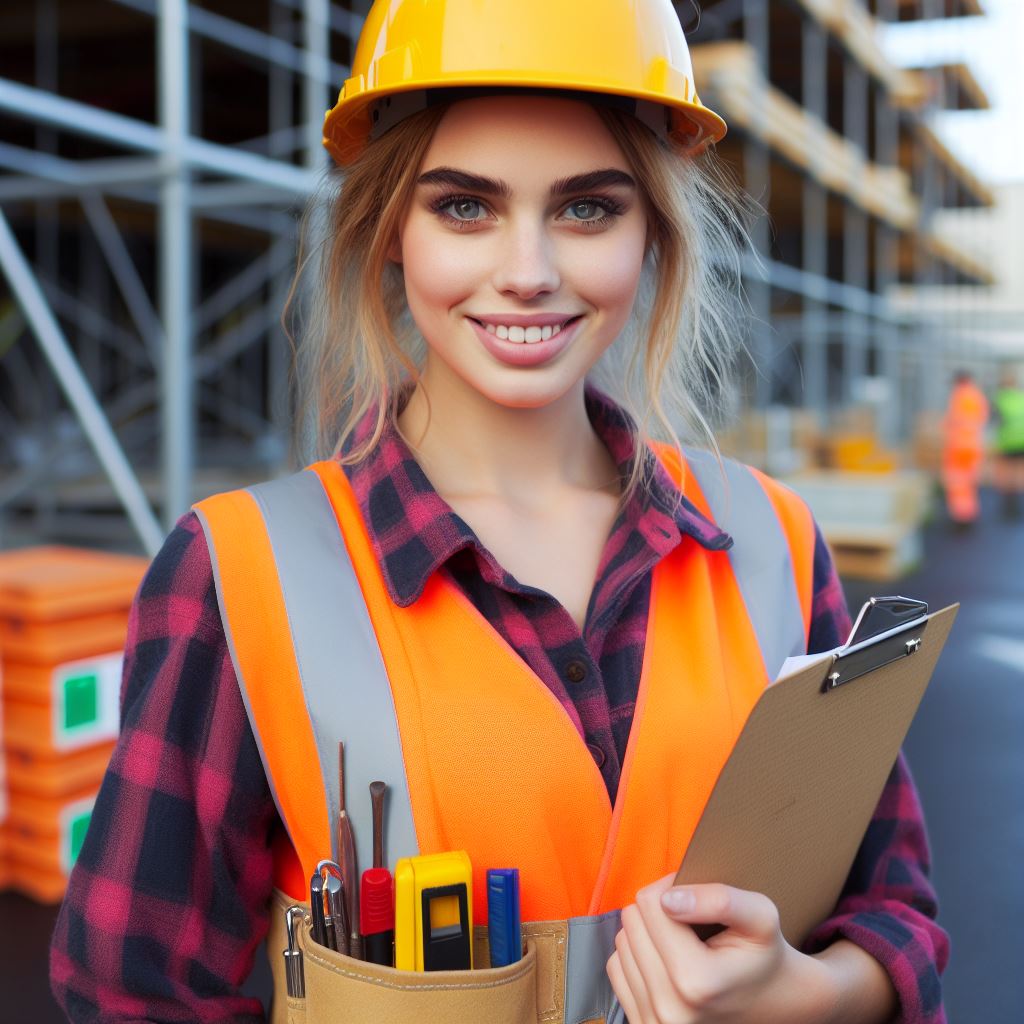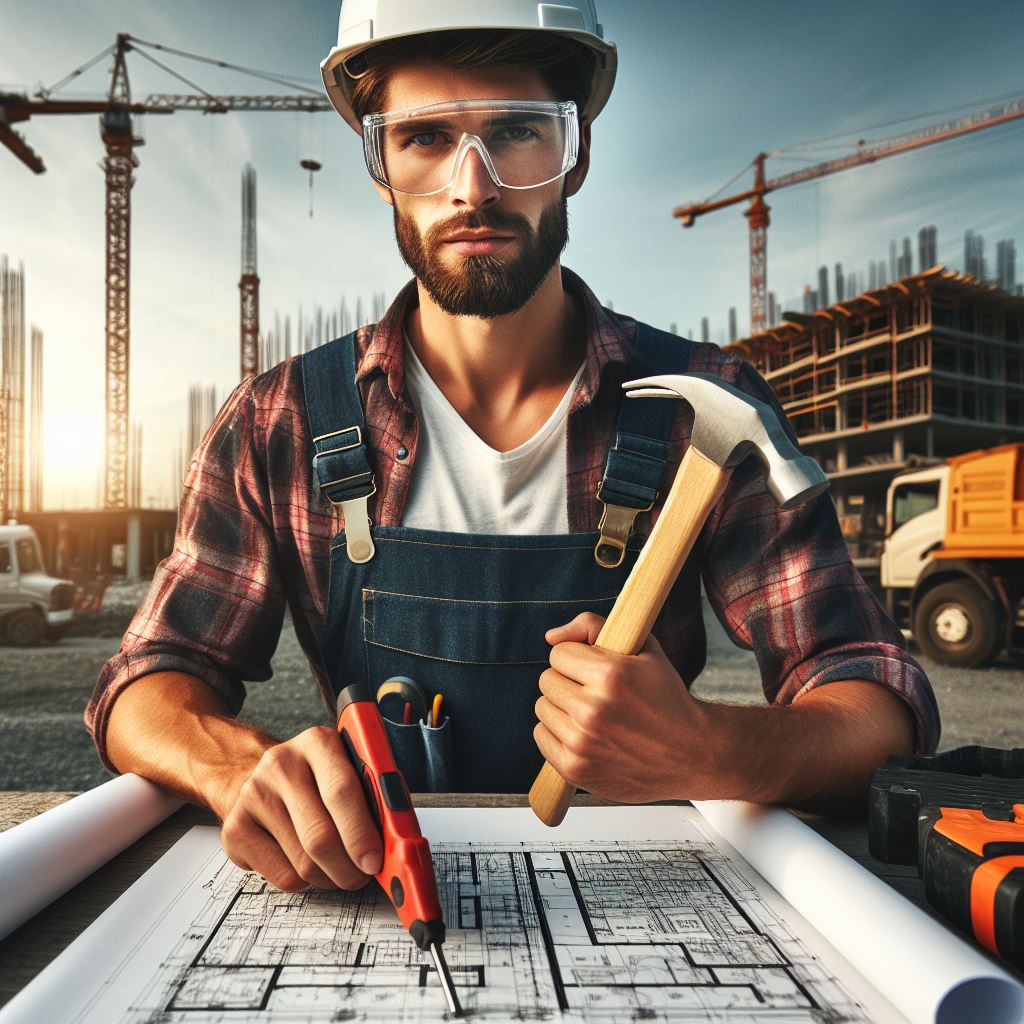Introduction
The building industry in Australia is currently experiencing significant growth and development.
It is important to discuss the future of building in Australia to understand its potential challenges and opportunities.
Current state of the building industry in Australia
The building industry in Australia is currently experiencing significant growth and development. With a booming population and increasing urbanization, there is a high demand for new infrastructure, residential, and commercial buildings.
The construction sector is becoming a critical driver of the country’s economy, contributing to employment and GDP growth.
Discussing the future of building in Australia
Discussing the future of building in Australia is of utmost importance. It allows us to identify potential challenges and find innovative solutions. As technology advances, sustainable practices and eco-friendly construction techniques are becoming more prevalent.
By exploring the future trends, we can understand how to build smarter, more efficient, and environmentally friendly structures.
Moreover, the future of building in Australia is closely tied to the country’s goals for urbanization and infrastructure development. As cities continue to expand, there is a need to plan and manage growth effectively.
By discussing the future of building, we can address issues such as housing affordability, transportation, and infrastructure gaps.
In review, the building industry in Australia is thriving, and understanding its future is crucial. By discussing the challenges and opportunities ahead, we can ensure sustainable, resilient, and prosperous communities for generations to come.
Current Challenges Faced by the Building Industry in Australia
Australia’s building industry is currently grappling with various challenges that are impacting its future prospects. These challenges include:
Lack of skilled labor and shortage of workers
The Australian building industry is facing a significant shortage of skilled labor, which is hampering its growth and productivity. There is a scarcity of workers with the necessary skills and qualifications to meet the demand in the sector.
This shortage of skilled labor is partly due to an aging workforce, with many experienced workers retiring and fewer younger workers entering the industry to replace them.
Furthermore, there has been a decline in the number of people pursuing vocational and trade education, resulting in a limited pool of skilled workers.
Rising costs of building materials
The cost of building materials in Australia has been steadily increasing, making it challenging for the industry to remain cost-effective. Factors such as inflation, trade tariffs, and transportation costs contribute to the rising prices of materials.
This increase in building material costs has a direct impact on the affordability of housing and construction projects. It becomes more difficult for developers and homeowners to build or renovate properties within their budget.
Technological advancements and their impact on traditional building methods
Rapid technological advancements are transforming the building industry in Australia. While these technologies offer numerous benefits, they also pose challenges to traditional building methods.
Automation, 3D printing, and modular construction techniques are revolutionizing the way buildings are designed and constructed. This shift requires the industry to adapt and upskill its workforce to leverage these new technologies effectively.
Environmental sustainability and energy-efficient practices
With the increasing global focus on sustainability and reducing carbon emissions, the building industry in Australia is under pressure to adopt environmentally friendly practices.
Developers and builders now need to incorporate energy-efficient designs, renewable energy sources, and sustainable building materials in their projects. This shift towards green building practices requires additional investment and expertise.
Furthermore, regulations and government policies are being implemented to enforce compliance with energy efficiency standards and green building certifications.
Your Personalized Career Strategy
Unlock your potential with tailored career consulting. Get clear, actionable steps designed for your success. Start now!
Get StartedIn general, the building industry in Australia is facing several challenges that have the potential to shape its future.
Addressing the shortage of skilled labor, mitigating rising building material costs, embracing technological advancements, and incorporating sustainable practices will be critical for the industry’s long-term success.
Emerging Trends in the Australian Building Industry
As the Australian building industry evolves, several emerging trends are shaping the future of building practices in the country. These trends include:
Modular Construction and Prefabrication
Modular construction and prefabrication are gaining popularity in Australia due to their efficiency and cost-effectiveness. This construction method involves building components off-site in factory-controlled conditions, then transporting and assembling them on-site.
It offers faster construction, reduced waste, and improved sustainability.
Modular construction benefits from economies of scale, allowing for streamlined manufacturing processes and reduced construction time. It also provides better control over quality as modules are built in controlled environments, minimizing the impact of weather conditions on the construction process.
Integration of Smart Technologies in Buildings
The increasing integration of smart technologies is revolutionizing the way buildings operate and interact with their occupants. From smart home automation systems to energy management tools, these technologies enhance comfort, convenience, and energy efficiency.
Smart technologies enable the monitoring and control of various systems within a building, such as lighting, heating, ventilation, and air conditioning (HVAC), security, and appliances.
Automated systems adjust settings based on occupancy, external weather conditions, and energy demand, optimizing energy usage and reducing costs.
Furthermore, the use of sensors and data analytics enables predictive maintenance, improving system reliability and reducing downtime.
Smart technologies also enhance occupant comfort and convenience through features like voice-activated controls, personalized preferences, and remote access control.
Emphasis on Sustainable and Eco-Friendly Practices
With a growing focus on sustainability and environmental responsibility, the Australian building industry is increasingly adopting eco-friendly practices. The construction sector is actively seeking ways to reduce its carbon footprint, conserve resources, and promote green building designs.
Building practices such as using sustainable materials, implementing energy-efficient designs, and incorporating renewable energy sources are becoming standard.
Additionally, water conservation measures, waste management strategies, and recycling initiatives are being prioritized to minimize environmental impact.
Green building certifications, such as Green Star and Leadership in Energy and Environmental Design (LEED), are gaining prominence as benchmarks for sustainable building practices.
These certifications encourage builders to adopt sustainable techniques and promote energy-efficient and environmentally friendly buildings.
Adoption of Building Information Modeling (BIM)
Building Information Modeling (BIM) is revolutionizing the planning, design, construction, and maintenance of buildings in Australia.
BIM is a digital representation of a building’s physical and functional characteristics, allowing stakeholders to collaborate and make informed decisions throughout the building lifecycle.
BIM enhances communication and coordination between architects, engineers, contractors, and owners. It enables the visualization of building designs, clash detection, cost estimation, and performance analysis.
The use of BIM improves project efficiency, reduces errors, and minimizes rework.
Moreover, BIM provides valuable data for facility management, enabling proactive maintenance and efficient operation.
Through digital simulations and virtual models, stakeholders can understand the impact of design changes, optimize energy usage, and enhance building performance.
Generally, the Australian building industry is witnessing several emerging trends that are shaping its future. Modular construction and prefabrication, integration of smart technologies.
Emphasis on sustainable practices, and adoption of BIM are revolutionizing the way buildings are designed, constructed, and operated.
These trends are driving efficiency, sustainability, and innovation in the construction sector, ensuring a brighter and more sustainable future for Australian buildings.
Stand Out with a Resume That Gets Results
Your career is worth more than a generic template. Let us craft a resume and cover letter that showcase your unique strengths and help you secure that dream job.
Get HiredRead: Plumbing 101: A Beginner’s Guide in Australia
Impact of Government Policies and Regulations
Australia’s government has implemented various initiatives, policies, and regulations to shape the future of building in the country.
These actions have significant impacts on promoting sustainable practices, ensuring safety and quality, and encouraging energy-efficient buildings.
Government initiatives promoting sustainable building practices
The Australian government recognizes the importance of sustainable building practices in reducing the environmental impact of the construction industry. To encourage the adoption of these practices, several initiatives have been introduced.
- The Green Building Council of Australia (GBCA) was established to drive sustainable building practices by developing and promoting the Green Star rating system.
- The government supports research and development into innovative construction materials and techniques that minimize resource consumption and waste generation.
- Funding programs, such as the Sustainable Cities Investment Fund, aim to support local governments in implementing sustainable building practices in their jurisdictions.
Building code and regulations ensuring safety and quality
The Australian government recognizes the importance of maintaining high safety and quality standards in the construction industry.
They have established building codes and regulations to regulate building practices and protect the interests of both builders and the public.
- The National Construction Code (NCC) sets the minimum requirements for the design, construction, and performance of buildings, including structural integrity, fire safety, and energy efficiency.
- Building practitioners are required to obtain licenses or registrations, ensuring their competence and adherence to professional standards.
- Regular inspections and certifications are conducted to ensure that buildings comply with relevant codes and regulations.
Incentives and subsidies for energy-efficient buildings
Recognizing the importance of energy efficiency in reducing greenhouse gas emissions, the Australian government provides incentives and subsidies to promote the construction of energy-efficient buildings.
- The Commercial Building Disclosure (CBD) Program requires the mandatory disclosure of energy efficiency information in commercial office spaces of a certain size.
- The government provides financial incentives, such as grants and tax rebates, to support the implementation of energy-efficient design features and renewable energy technologies in buildings.
- Incentives are available for retrofitting existing buildings to improve their energy performance, including upgrades to insulation, lighting, and heating/cooling systems.
In fact, the government’s policies and regulations have a substantial impact on the future of building in Australia. They promote sustainable practices, ensure safety and quality, and incentivize energy-efficient buildings.
By encouraging the adoption of these initiatives, Australia is taking concrete steps towards a more sustainable and resilient built environment.
Read: Top Plumbing Trends in Australian Engineering
See Related Content: Designing Drought-Tolerant Aussie Gardens
The Role of Innovation and Technology in the Future of Building
In order to keep up with the demands of a growing population and the need for sustainable infrastructure, the construction industry in Australia is embracing innovation and technology.
Advancements in construction materials and techniques, incorporation of artificial intelligence and automation, virtual and augmented reality applications in design and construction, as well as the use of drones and robotics in building processes are all contributing to the future of building in Australia.
Advancements in Construction Materials and Techniques
Traditional construction materials such as concrete and steel are being enhanced to improve their strength, durability, and energy efficiency. For instance, the incorporation of nanotechnology in concrete allows for stronger and more sustainable structures.
Additionally, the development of lightweight and flexible materials is revolutionizing the way buildings are designed and constructed, enabling greater flexibility and adaptability in response to changing needs.
Technological advancements in construction techniques are also streamlining and speeding up the building process.
Prefabrication and modular construction methods, for example, allow for components of a building to be manufactured off-site and then assembled on-site, reducing construction time and costs.
Moreover, the use of 3D printing in construction allows for the creation of complex and intricate structures with greater precision and efficiency.
Incorporation of Artificial Intelligence and Automation
Artificial intelligence (AI) and automation are transforming the way buildings are designed, operated, and maintained.
AI-powered software and algorithms can analyze vast amounts of data to optimize building performance, energy consumption, and occupant comfort.
Building management systems can automate tasks such as lighting, temperature control, and security, thereby increasing efficiency and reducing energy waste.
The integration of AI with Building Information Modeling (BIM) is also revolutionizing the design and construction process. BIM software allows for more accurate and collaborative building design, enabling teams to identify and resolve potential issues before construction begins.
AI algorithms can further optimize designs based on various parameters, such as cost, energy efficiency, and structural integrity.
Virtual and Augmented Reality Applications in Design and Construction
Virtual and augmented reality (VR/AR) technologies are being increasingly utilized in the design and construction phases of building projects. VR allows for immersive virtual walkthroughs of a building design, enabling stakeholders to experience and provide feedback before construction begins.
AR, on the other hand, overlays digital information onto the physical world, facilitating real-time collaboration and visualization on construction sites.
Transform Your LinkedIn for Maximum Impact
Elevate your professional brand with a LinkedIn profile that attracts recruiters, showcases your expertise, and maximizes opportunities. Stand out in your industry with a profile built for success.
Boost ProfileThese technologies enhance design accuracy and reduce errors by providing a realistic simulation of the final product.
They also improve communication and coordination among architects, engineers, and contractors, resulting in more efficient project delivery.
Additionally, VR/AR technologies can be used for training purposes, allowing workers to virtually practice construction tasks in a safe and controlled environment.
Drones and Robotics in Building Processes
Drones and robotics are revolutionizing various aspects of building processes, ranging from site surveys and inspections to material delivery and construction tasks.
Drones equipped with high-resolution cameras and sensors can quickly and accurately survey construction sites, monitor progress, and identify potential safety hazards. This data can inform decision-making and enable proactive problem-solving during construction.
Robotics technology, such as bricklaying robots and 3D-printing robots, is automating repetitive and labor-intensive tasks, leading to increased productivity and reduced construction time.
These robots can work tirelessly around the clock, with greater precision and consistency than human labor. Furthermore, autonomous vehicles and drones are being utilized for the transportation of materials and equipment, minimizing manual handling and ensuring efficient logistics.
Essentially, innovation and technology play a pivotal role in shaping the future of building in Australia.
Advancements in construction materials, incorporation of AI and automation, adoption of VR/AR applications, and the use of drones and robotics are all transforming the construction industry, leading to more sustainable, efficient, and adaptable built environments.
Read: A Day in the Life of an Aussie Plumber

Potential Benefits and Challenges for the Future of Building in Australia
Improved efficiency and productivity
- The future of building in Australia holds the promise of improved efficiency and productivity.
- Advancements in technology and construction methods can streamline processes and reduce resource waste.
- Automated systems and robotics can assist in repetitive tasks, freeing up human labor for more specialized jobs.
- Efficient project management tools and software can help in planning and executing construction projects more effectively.
- Adopting lean principles and prefabrication techniques can minimize construction waste and improve project timelines.
Increased affordability and reduced construction time
- The future of building in Australia aims to increase affordability and reduce the time required for construction.
- Off-site construction, such as modular and prefabricated methods, can significantly reduce construction timelines.
- Standardized designs, where applicable, can also help in reducing costs and construction time.
- Implementing efficient supply chain management can minimize delays and ensure timely availability of materials.
- Using innovative building materials and techniques can lower costs and improve energy efficiency in the long run.
Skill gaps and the need for training and upskilling
- Despite the potential benefits, the future of building in Australia also faces challenges related to skill gaps in the industry.
- As construction methods and technologies evolve, there is a growing need for specialized skills and expertise.
- Workers will require training and upskilling to adapt to new construction practices and operate advanced machinery.
- Investing in vocational education and apprenticeship programs can help bridge the skill gap and create a competent workforce.
- Collaboration between industry stakeholders and educational institutions is crucial for aligning training programs with industry requirements.
Economic and environmental sustainability considerations
- The future of building in Australia must also address economic and environmental sustainability considerations.
- Sustainable building practices, such as using renewable materials and energy-efficient designs, can lower environmental impact.
- Implementing green building certification standards can encourage the adoption of sustainable practices at a larger scale.
- Investing in research and development of sustainable construction materials and technologies is essential.
- Government policies and incentives can play a significant role in promoting sustainable building practices and reducing carbon emissions.
Ultimately, the future of building in Australia offers potential benefits such as improved efficiency, increased affordability, and reduced construction time.
However, the industry must also address challenges related to skill gaps and the need for training, as well as economic and environmental sustainability considerations.
By investing in technological advancements, training programs, and sustainable practices, Australia can create a thriving and sustainable construction sector.
Read: How to Become a Plumber in Australia
Conclusion
Recap of key points discussed in the blog post
In this blog post, we explored the future of building in Australia and the various emerging trends and technologies shaping the industry. We discussed the importance of sustainability, modular construction, and the integration of smart home technologies.
Positive outlook for the future of building in Australia
The future of building in Australia looks promising, with a focus on sustainable practices, energy efficiency, and innovative construction methods. These developments will not only benefit the environment but also create better living spaces for Australians.
Importance of adapting to emerging trends and technologies in the industry
In order to stay competitive in the construction industry, it is crucial for businesses to adapt to emerging trends and technologies.
By embracing sustainable practices and integrating smart technologies, builders can meet the evolving needs and expectations of customers.
Overall, the future of building in Australia holds exciting possibilities.
By embracing sustainability and adopting new technologies, the industry can create a greener, more efficient, and comfortable built environment for all Australians.




